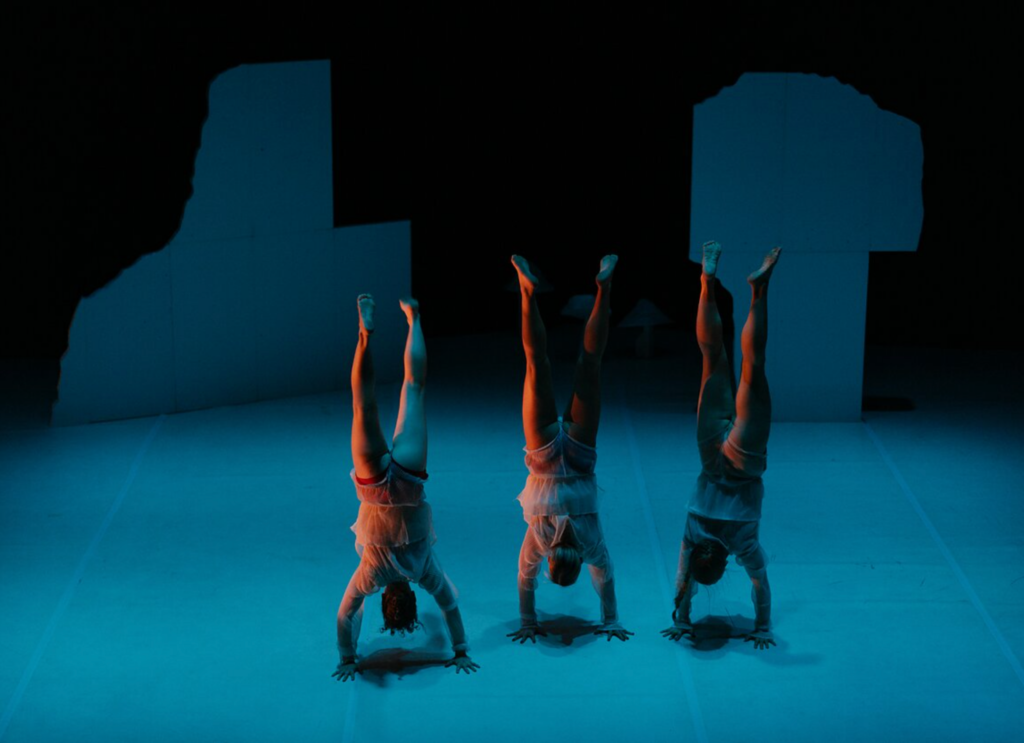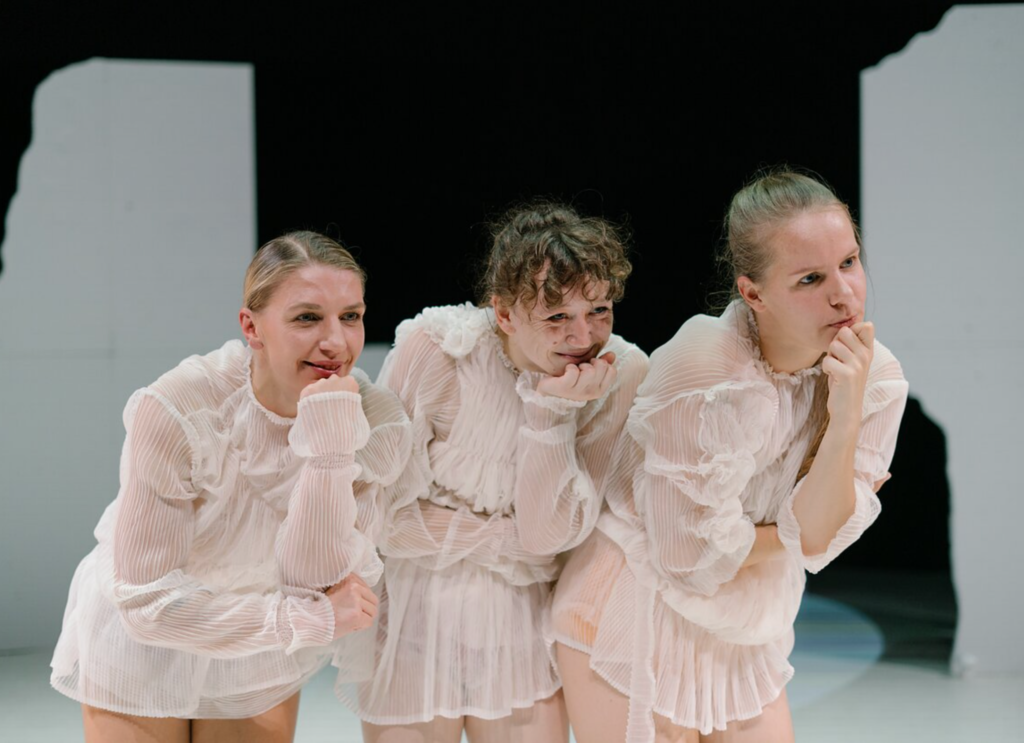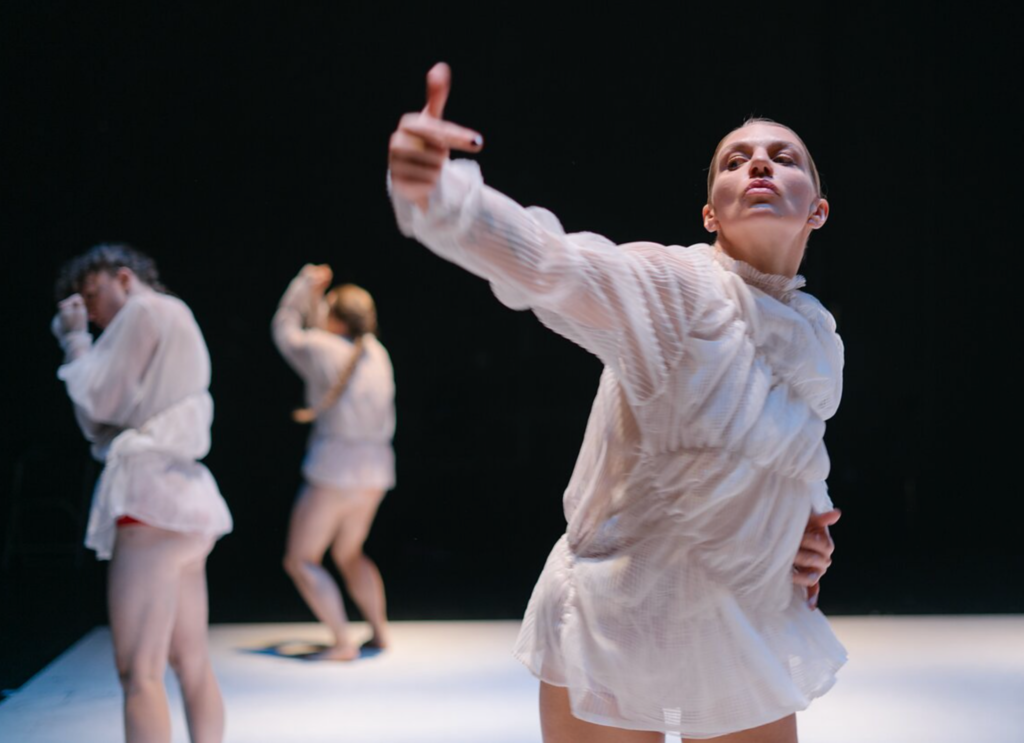MATCH 3
Spalio 1 d. 18:00 (trečiadienis)
Trukmė: 45 min.
BE KOMPANIJOS I chor. Vilma Pitrinaitė I N-16
Kaunas City Chamber Theatre, Great Hall
Šiame kūrinyje trys šokėjos tyrinėja kūnų, žodžių ir tarpusavio santykius, užduodamos klausimus apie žmogaus ir technologijų sąveiką, konkurenciją bei šiuolaikinio žmogaus vietą šiame procese.
Ar žinai, kaip atskirti žmogų nuo mašinos? Reikia atlikti Tiuringo testą. Jo metu žmogus teisėjas natūralia kalba šnekasi su vienu žmogumi ir viena mašina. Visi trys eksperimento dalyviai turi būti izoliuotose patalpose, kad teisėjas nematytų, kuriuos atsakymus pateikia mašina, o kuriuos – žmogus.
Jei teisėjas pagal atsakymus negali patikimai atskirti mašinos nuo žmogaus, sakoma, kad mašina išlaikė testą. Siekis – testuoti mašinos intelektą, o ne gebėjimą imituoti žmogaus leidžiamus garsus. Dirbtinis intelektas parodė, kad jis gali visai neblogai simuliuoti žmonių pokalbius tiesiog sekdamas daugybę paprastų mechaninių taisyklių. Tuo susidomėję žmonės suprato, kad jis gali būti pranašesnis už žmogų…
Idėja, choreografija ir tekstas: Vilma Pitrinaitė
Atlikimas ir choreografija: Oksana Griaznova, Sigita Juraškaitė, Agnietė Lisičkinaitė
Muzika: Dominykas Digimas
Vaizdo projekcijos: Kristijonas Dirsė
Scenografija ir kostiumai: Rūta Kyguolytė
Šviesų dailė: Povilas Laurinaitis


Foto. aut. I. Vyšniauskaitė
October 1, 18:00 (Wednesday)
Duration: 45 min.
BE KOMPANIJOS I chor. Vilma Pitrinaitė I N-16
Kaunas City Chamber Theatre
Do you know how to tell a human being from a machine? A Turing test, originally called the imitation game, is required. During the test, a human judge talks to one person and one machine in human language. All three participants in the experiment must be in isolated rooms. If the evaluator cannot reliably tell the machine from the human, the machine is said to have passed the test.
Artificial intelligence has shown that it can simulate human conversations quite well just by following a series of simple mechanical rules. People who were interested in this realized that AI could be superior to humans – so superior that they felt so fake suddenly and so scared. But after all, one person can also function better in the System than another person, right?
Is it possible because contradictions, doubts, empathy, feelings are redundant in this System? Maybe we should optimize the human being and create an optimized dystopian tribe of strangely functioning fairies for testing it on stage? What else would we like to check out besides their conversation or imitation capacities? Their behavior during their dance practices or mating games ? Would you like to ask them any questions about how their artificial world operates? If you’re a bit scared or lost , don’t worry. We already have all your questions to our answers.
- Idea, choreography and text: Vilma Pitrinaitė
- Performance and choreography: Oksana Griaznova, Sigita Juraškaitė, Agnietė Lisičkinaitė
- Music: Dominykas Digimas
- Video projections: Kristijonas Dirsė
- Set and costume design: Rūta Kyguolytė
- Lighting: Povilas Laurinaitis

